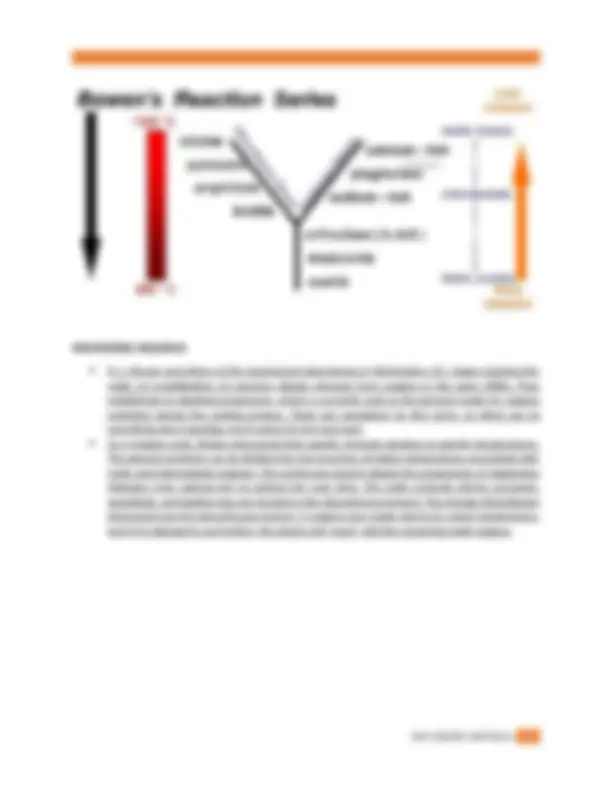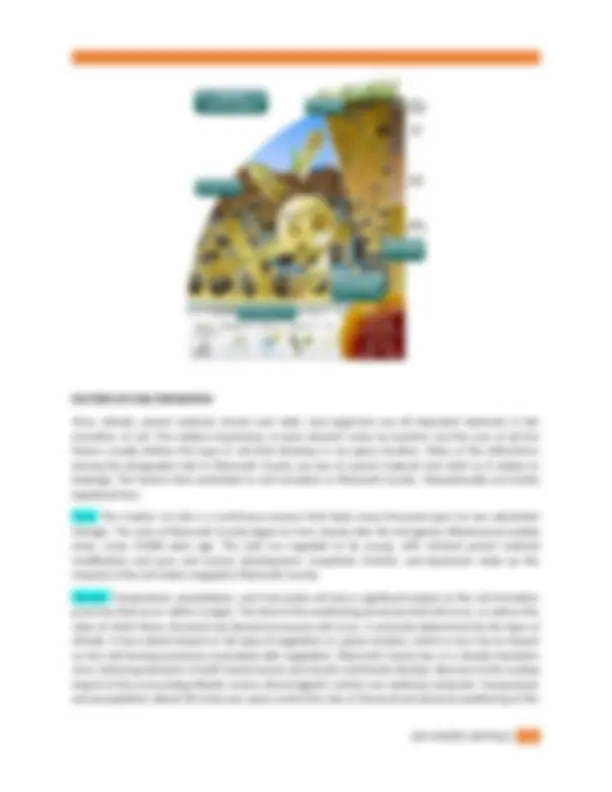





Study with the several resources on Docsity

Earn points by helping other students or get them with a premium plan


Prepare for your exams
Study with the several resources on Docsity

Earn points to download
Earn points by helping other students or get them with a premium plan
Community
Ask the community for help and clear up your study doubts
Discover the best universities in your country according to Docsity users
Free resources
Download our free guides on studying techniques, anxiety management strategies, and thesis advice from Docsity tutors
The study of the soil pedon, it has an answer that is originally compose by me, that can serve as your answers
Typology: Assignments
1 / 6

This page cannot be seen from the preview
Don't miss anything!




We study soil because we want to make the best use of it, particularly as a medium for growing our crops. It is a resource that provides us with the basic necessities for living. The soil is a natural body composed of a mixture of organic and inorganic materials and which is formed from disintegration and decomposition (weathering) of rocks and minerals. It has a dimension of depth, width and breadth, physical, chemical, and biological properties that were conditioned by varying degrees of influence of parent material, topography, living organisms, climate, and time. Because of these various influences, different kinds of soils evolve and develop over the earth’s surface. These differences are important to us because they reflect to a large extent the capacity of soils for various uses. Thus, we approach the study of the soil by examining the soil profile which shows not only the surface but also its lower reaches. We see more evident differences among soils through the soil profile. II. OBJECTIVES After this exercise, the student should:
Oxidation is defined as the process when an atom, molecule, or an ion loses one or more number of electrons in a chemical reaction. When oxidation occurs, the state of the chemical species increases. Oxidation does not necessarily have to involve oxygen. Reduction is defined as the process when an atom, molecule, or an ion gains one or more electrons in a chemical reaction. When reduction occurs, the state of the chemical species decreases. Reduction does not necessarily have to involve hydrogen.
Topsoil
Humus is dark, organic material that forms in soil when plant and animal matter decays. Topsoil is the upper layer of soil, usually between 2 to 8 inches in depth, that contains most of the ground’s nutrients and fertility. Leached of clay, minerals, and organic matter, leaving a concentration of sand and silt particles of quartz or other resistant materials – missing in some soils but often found in older soils and forest soils. E. Eluviated Horizon Rich in minerals that leached (moved down) from the A or E horizons and accumulated here. The deposit at Earth’s surface from which the soil developed. A mass of rock such as granite, basalt, quartzite, limestone or sandstone that forms the parent material for some soils – if the bedrock is close enough to the surface to weather. This is not soil and is located under the C horizon.
N. L. Bowen and others at the Geophysical Laboratories in Washington, D.C. began studying the order of crystallization of common silicate minerals from magma in the early 1900s. They established an idealized progression, which is currently used as the general model for magma evolution during the cooling process. There are exceptions to this norm, as there are to everything else in geology, but it works for the most part. As a magma cools, Bowen discovered that specific minerals develop at specific temperatures. The general evolution can be divided into two branches at higher temperatures associated with mafic and intermediate magmas. The continuous branch depicts the progression of plagioclase feldspars from calcium-rich to sodium-rich over time. The mafic minerals olivine, pyroxene, amphibole, and biotite mica are formed in the discontinuous branch. The strange thing Bowen discovered was the discontinuous branch. A magma may create olivine at a given temperature, but if it is allowed to cool further, the olivine will “react” with the remaining mafic magma.
Time, climate, parent material, terrain and relief, and organisms are all important elements in the formation of soil. The relative importance of each element varies by location, but the sum of all five factors usually defines the type of soil that develops in any given location. Many of the distinctions among the designated soils in Plymouth County are due to parent material and relief as it relates to drainage. The factors that contribute to soil formation in Plymouth County, Massachusetts are briefly explained here. Time: The creation of soils is a continuous process that takes many thousand years to see substantial changes. The soils of Plymouth County began to form shortly after the last glacier (Pleistocene) melted away, some 14,000 years ago. The soils are regarded to be young, with minimal parent material modification and poor soil horizon development. Inceptisols, Entisols, and Spodosols make up the majority of the soil orders mapped in Plymouth County. Climate: Temperature, precipitation, and frost action all have a significant impact on the soil formation processes that occur within a region. The kind of the weathering processes that will occur, as well as the rates at which these chemical and physical processes will occur, is primarily determined by the type of climate. It has a direct impact on the type of vegetation in a given location, which in turn has an impact on the soil-forming processes associated with vegetation. Plymouth County lies in a climate transition zone, featuring elements of both humid marine and humid continental climates. Because to the cooling impact of the surrounding Atlantic oceans, New England’s winters are relatively moderate. Temperature and precipitation (about 40 inches per year) control the rate of chemical and physical weathering of the